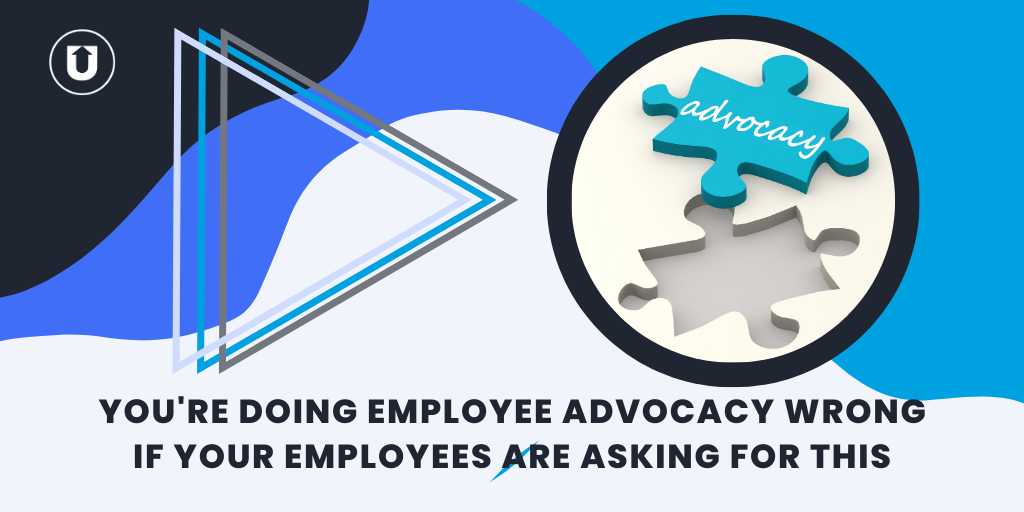A Playbook for Leveraging Curated Content in Enterprise Sales

Sales has always been about connections. Technology has changed the way we make those connections, but it hasn't changed the need for the human element.
If you can properly combine modern automation, the wealth of resources available online, and the human touch, you can take your enterprise sales and social selling to the next level and connect with prospects like never before.
What is curated content?
Visitors to your site or your social media accounts want to see content related to your industry. Many Content marketers choose to write content themselves, usually in the form of a blog.
But that isn't the only way to deliver content to your users. By seeking out and posting summaries of content created by other people, you are still showing a knowledge of, and interest in, your chosen industries without the need to be a writer.
You are also opening up a great opportunity to leverage this content for enterprise sales, as we'll be discussing. Services like UpContent make it easy to seek out and find the most compelling content to share with your users or to court a specific customer with.
Let's talk about how to do that.
Leveraging curated content for sales
In any market you are attempting to sell in, the first thing potential customers are going to want to know is if you understand their industry and have experience working within it.
So, if your business is involved in working with banks, you'd find content that is relevant to banks and share it via social media or email channels, preferably with some commentary. There are two important stipulations to that, however.
First, make sure that the content you are posting ties in some way to your company's value proposition. Second, make sure that your commentary explains how the content connects to what you offer customers.
This will let those engaging with what you share know that you have an interest in their industry, and that you have solutions to their pain points.
You may also choose to post the articles on your social media account, which opens up doors for pursuing specific clients.
Courting specific clients
Let's say you have a client you want to work with. You can set UpContent to give you articles about that client, and about topics that may be of interest to them.
When you share that content it establishes your interest in their company. If you tag the target company's social media accounts or comment on their own articles or social media posts, you are getting your name in front of them.
Then when you set up a meeting with them to discuss a working relationship, they will already know who you are.
There is a right way and a wrong way to do this, however. It's not enough to just look for content that your target is mentioned in.
You must also look for content that could be relevant to them. You must also only share content that is related to the value proposition you provide and that can be tied back to what you are able to offer companies.
Finally, you must also remember that you are not trying for the hard sale here. The goal is brand recognition.
Share the content, comment on it in a meaningful way, that avoids sounding like pandering, and take time to build the relationship slowly.
The company will see the relationship between you, the content you are showing interest in, and your organization's value to them even without any pushiness on your part.
This will make your organization one that they want to get to know, rather than one they want to avoid.
A side benefit of building relationships with customers in this way is that it reduces the sales cycle. In a normal first meeting, you have to explain who your company is, what they do,and how it can relate to your target's needs and goals.
When you have familiarized them with you through curated content, many of those questions are already answered. With the formalities out of the way, sales talk happens quicker and the sale is closed faster.
Curated content for business intelligence
Being able to showcase your interest in a subject and being able to present potential clients with your branding in a positive way are great benefits of curated content.
Another benefit of a service like UpContent is its use for business intelligence.
When you have a target company in mind that you want to work with and UpContent is frequently sending you articles about them and their industry, it allows you to build greater knowledge of that company and their industry, which you can then leverage into meaningful insights that will help drive the success of the relationship.
This is particularly helpful at large organizations, where sales accounts are frequently shuffled among the sales reps.
The sales reps must all get together and compare notes on the accounts they lost and picked up.
Any enterprise sales organization can benefit from UpContent because sales reps will have the curated content to quickly getup to speed, and they'll be able to quickly form relationships with their new accounts using the social media aspect.
Just like the act of reaching out the client through social media, the use of curated content as a business intelligence tool can help shorten the sales cycle when new sales reps are assigned to an account.
Deepening relationships
As mentioned previously, you cannot properly leverage curated content if you are only focused on making the sale.
You should view it as a way to deepen your relationship with a prospect or existing client. If you see an article that might be of interest to them, share it with them and ask their thoughts.
The worst thing that usually happens is they'll thank you for the article. The best is that you'll spark up a conversation that furthers the relationship you've built with them.
It's a safe bet that nobody has ever thanked you for following up on a sales pitch and asking if they are ready to buy, so even the worst case puts you further ahead in the relationship than failing to properly nurture that connection would.
In the long run, building lasting and mutually beneficial relationships will be the more profitable venture.
Be sure not to focus only on articles where the target company is mentioned. When you post content about an article where your prospect wasn't mentioned but probably should have been, that resonates really well.
Many CEOs will take the time to thank you for mentioning them in posts where it is relevant to do so. But you must do it in away that shows how the content relates to the prospect's core business.
It must be meaningful rather than pandering. Maybe you mention that the prospect has a great solution in that space or that your post reminds you of a previous conversation with someone at the company.
Remember, people with purchasing power at a company are pandered to constantly. They can spot it a mile away.
If you are only going to pander, you might as well just 'like' their social media posts like the countless other sales reps that do so in order to gain favor.
Make sure that all of your comments and interactions from your curated content strategy are genuine and in the interest of forming tighter bonds between your two companies.
Be a good digital listener
With services like UpContent, you don't need to be a good writer to drive sales with content. But you will need to be an avid reader and a good digital listener.
Nobody likes that person who shows up to a dinner party and talks about themselves all the time, but everyone raves about the person who shows up and is a great listener.
There is a belief in content marketing that you need to post a lot to have an effect. John O'Connell, CEO of The Oasis Group, disagrees:
"Some people say posting more content is better because your name is out there more often. I tend to disagree. I think posting the right content and posting content that really does promote the core values of the firm are critical. [UpContent] gives you an ability to really post content that really does strengthen the core values of your firm.”
When there are opportunities to post content that can meaningfully speak to your core values, or tie those values to the interests of a client or potential client, make the post.Otherwise, don't throw content up just to say you did so.
Doing so dilutes your brand, and branding is the primary purpose of content marketing.
Conclusion
Let's give a quick recap of some of the lessons learned throughout this post so that you'll have a solid game plan if you want to make your own effort at using UpContent to increase sales.
If you take away anything from what you've read, it should be these four key points:
Start small— The goal with this type of content marketing is brand awareness. You should always stay focused on your core values, but that is especially true when just starting out and learning the ins and outs of curated content marketing.
Target individual customers — Once you've got the hang of things, you can pick a customer that you'd like to target. Do so using the tactics described throughout this post.
Build relationships — When targeting customers, don't go full-on sale mode with your curated content strategy. Building the relationship is more valuable in the long run than in a quick sale.
If you follow the advice presented here, you'll quickly find that your relationships with customers and potential customers alike improve dramatically.
This will result in higher sales with less effort, all while building your brand and establishing yourself as a key source of information in your industry.
John is the Founder and Chief Executive Officer for The Oasis Group. He created the firm to help sales, marketing, and customer care teams of all sizes to operate a single organism with the goal of attracting, closing, and retaining customers. The Oasis Revenue Increasing Process has been honed over 25 years in start-ups and world class sales teams.
"playbook" by Richard Berg is licensed under CC BY 2.0



